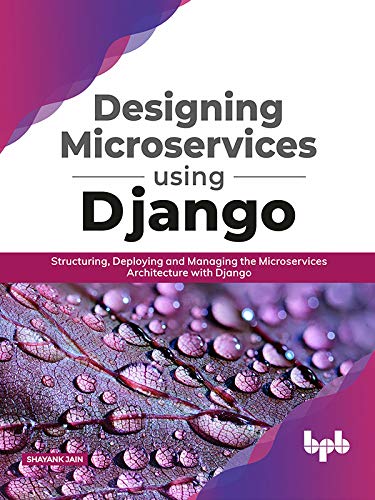Designing Microservices Using Django by Shayank Jain Link to heading
Summary Link to heading
“Designing Microservices Using Django” by Shayank Jain explores the principles and best practices for building microservices architectures specifically within the Django framework. The book covers how Django’s capabilities can be leveraged to create scalable, modular services that can be developed, deployed, and maintained independently. It delves into key aspects of microservices design, such as service decomposition, inter-service communication, and effective use of Django’s REST framework. The book also emphasizes the importance of security, testing, and monitoring to ensure a resilient architecture.
Review Link to heading
This book provides practical, Django-specific insights for developers transitioning to microservices from monolithic applications. Jain’s explanations are accessible, with a good balance of theoretical foundation and practical examples. However, some readers may find it more beneficial if they have prior knowledge of Django and microservices concepts, as the book assumes familiarity with basic principles. Overall, it’s a helpful resource for Django developers aiming to structure applications in a microservices architecture.
Key Takeaways Link to heading
- Service Decomposition: Effective microservices design begins with correctly identifying and decoupling services to allow independent scaling and development.
- REST Framework Utilization: Django’s REST framework offers tools that simplify inter-service communication and API design.
- Security Considerations: Ensuring secure communication between services is crucial, especially for data-sensitive applications.
- Testing and Monitoring: Comprehensive testing, including unit and integration tests, is essential for maintaining service reliability, along with consistent monitoring.
- CI/CD Pipeline Setup: Emphasizes the importance of automation in deployment to ensure seamless, frequent updates across services.
